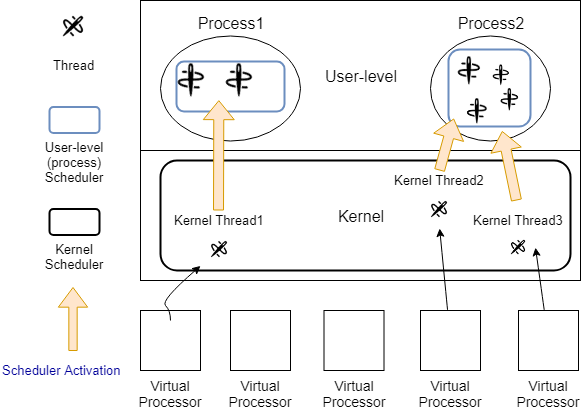Multithreading
What is a Thread?

Threads are “light-weighted” processes inside a process - a sequence of instructions. It allows concurrency and parallelism in a program. For example, in a Client-Server architecture, threads can be created to handle requests or to manage remote objects in the server. Below is a figure illustrates 4 different C-S architecture using multithreading (4 different processes in one server). From server1 to server4 are Thread-per-connection, Worker-Pool (fixed number of threads), Thread-per-request and Thread-per-object respectively.

User-level Threads and Kernel Threads
In order to reduce context switch expenses, Thomas et al. developed an approach to mediate between user-level scheduling and kernel scheduling of threads. I drew the figure below to show the basic idea of a Scheduler Activation (SA). Further readings can be found in Coulouris’book, pp.302 (pdf page 320).

In addition to 4 different kind of events (Virtual processor allocated, SA Blocked, SA Unblocked and SA preempted) that the SA sends to the user-level, a user-level scheduler can inform the kernel that a virtual processor is no longer needed / a new (additional) virtual processor is needed.